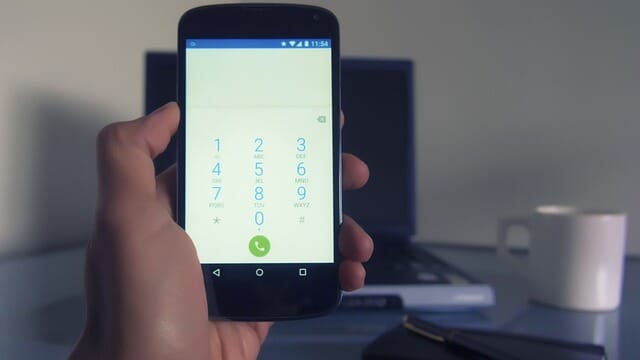
“Reverse Phone Lookup vs Caller ID: What's the Difference?”
Introduction
In today’s fast-paced world, keeping track of incoming calls can be a daunting task. With technology advancing at an unprecedented rate, we have access to various tools that help us manage our phone communications more effectively. Two popular methods for identifying callers are reverse phone lookup and caller ID. Although they may seem similar at first glance, they're fundamentally different in their approach and functionality. This article delves deep into the nuances of these two systems, helping you understand “Reverse Phone Lookup vs Caller ID: What's the Difference?”
What is Reverse Phone Lookup?
Understanding Reverse Phone Lookup
Reverse phone lookup is a service that allows individuals to find information about a person or business using only their phone number. This can include the caller's name, address, and other relevant details. Typically, these services aggregate data from public records, social media profiles, and other online sources.
How Does Reverse Phone Lookup Work?
When you perform a phone number lookup, you input the number into a database provided Phone directory search by a reverse phone lookup service. The system then searches its database for any associated information linked to that number.
Benefits of Using Reverse Phone Lookup Services
- Identifying Unknown Callers: One of the primary advantages is the ability to identify unknown numbers.
- Fraud Prevention: It helps in avoiding scams by identifying suspicious numbers.
- Connecting with Old Friends: You might find long-lost friends or acquaintances through their old numbers.
Limitations of Reverse Phone Lookup
While useful, reverse phone lookup services aren't flawless:
- They may not always have updated or accurate information.
- Some databases may charge fees for accessing detailed reports.
What is Caller ID?
Understanding Caller ID Technology
Caller ID is a telecommunication feature that displays the incoming caller's telephone number (and sometimes their name) on your device before you answer the call. It's an integral part of modern telephony systems.
How Does Caller ID Work?
When someone calls you:
Benefits of Caller ID Features
- Immediate Identification: It allows users to identify calls instantly without needing external services.
- Spam Detection: Many devices now flag potential spam calls based on known spam numbers.
Limitations of Caller ID
Despite its advantages:
- Caller ID can be easily spoofed by scammers who disguise their real numbers.
- It's limited to showing only available information; it won’t give comprehensive details like reverse lookups do.
Reverse Phone Lookup vs Caller ID: What's the Difference?
At its core, both reverse phone lookup and caller ID serve the purpose of identifying callers but differ significantly in functionality and application:
| Feature | Reverse Phone Lookup | Caller ID | |-------------------------------|----------------------------------------|-----------------------------------| | Main Functionality | Provides extensive details about callers | Displays incoming caller’s number | | Data Source | Aggregated from various databases | Provided by telecommunications networks | | Depth of Information | Name, address, history | Usually just name and number | | Cost | Often requires payment | Generally included in telecom plans| | Accuracy | Varies based on database updates | Generally accurate but can be spoofed |
In essence, while caller ID gives immediate insights into who is calling based on real-time data transmitted during a call, reverse phone lookup offers more depth and context but requires proactive searching.
When Should You Use Each Tool?
Using Reverse Phone Lookup Effectively
You might want to consider using a reverse phone lookup when:
- You've received repeated calls from an unknown number and wish to know more about it.
- You suspect a scam or telemarketing call and want additional verification before answering.
Example Situations
- Here, performing a reverse search could reveal if others have reported it as spam.
- Utilize reverse lookup to check if it's legitimate or potentially harmful.
Using Caller ID for Daily Communication
Caller ID is ideal for everyday use when:
- You want quick insights into who’s calling without extra steps.
- You're screening calls from known contacts or businesses.
Example Situations
- Immediate visibility helps decide whether to answer based on urgency.
- If flagged as spam via caller ID features built into smartphones.
Popular Reverse Phone Lookup Services Reviewed
1. Whitepages
Whitepages is one of the most trusted names in reverse phone lookups. It provides extensive data but may charge fees for detailed reports.
Key Features
- Comprehensive database
- User-friendly interface
- Offers both free and premium options
2. AnyWho
This free service offers basic details about callers without any costs involved.
Key Features
- No registration required
- Simple design
- Limited data compared to paid services
3. Truecaller
Famous for its app-based functionality, Truecaller combines community-generated spam reports with traditional lookup capabilities.
Paid phone lookup servicesKey Features
- Community-based spam detection
- Mobile app availability
- Name identification feature
Common Misconceptions About Reverse Phone Lookups and Caller IDs
1. All Numbers Can Be Identified Easily
Many believe all unknown numbers can be identified without hassle; however, that’s not always true due to privacy laws and unlisted numbers which often don’t appear in databases.
2. Both Tools Function Similarly
While they share similarities regarding identification purposes, their operational mechanisms differ significantly – reverse lookups provide far deeper insights than standard caller IDs offer.
Privacy Concerns with Reverse Phone Lookups and Caller IDs
Both tools raise privacy concerns among users – especially when sensitive information may be accessible through reverse searches:
- Is my personal information safe?
- Generally yes; reputable services prioritize privacy but ensure you're using trustworthy platforms.
How Can Users Protect Their Privacy?
To safeguard personal data while using these tools:
Owner details
FAQ Section
What is a reverse phone lookup?
A reverse phone lookup allows individuals to find out who owns a specific phone number by entering it into an online database which retrieves associated data such as names or addresses.
Is there a cost associated with using reverse phone lookup services?
Some services offer free basic searches while in-depth results often require payment depending on how detailed you want your report to be.
Can I trust information obtained through reverse lookups?
While many reputable services strive for accuracy, always double-check facts against multiple sources whenever possible as inaccuracies do exist due primarily outdated records being used!

How does caller ID work?
Caller ID works by transmitting your incoming caller's telephone number alongside signals sent during ringing so recipients know who's calling before answering!
Are there restrictions on what I can find with these tools?
Yes! Legal restrictions prevent accessing confidential records unless they’re publically available—check local laws governing this aspect before proceeding!
What should I do if I suspect I've received scam calls?
Consider running those numbers through both options mentioned above—using either method will help confirm if those were indeed fraudulent claims attempting contact!
Conclusion
In summary, understanding the differences between "reverse phone lookup" and "caller ID" equips individuals with better knowledge about managing their communication landscape effectively while ensuring safety against potential scams or unwanted disturbances ringing through daily life! Whether choosing one over another depends largely upon individual needs—each tool possesses unique strengths suited towards specific situations making them valuable assets when utilized appropriately!
By exploring both options thoroughly—recognizing limitations alongside benefits—it becomes apparent why knowing "Reverse Phone Lookup vs Caller ID" aids everyone navigating today's complex digital communication environment seamlessly!